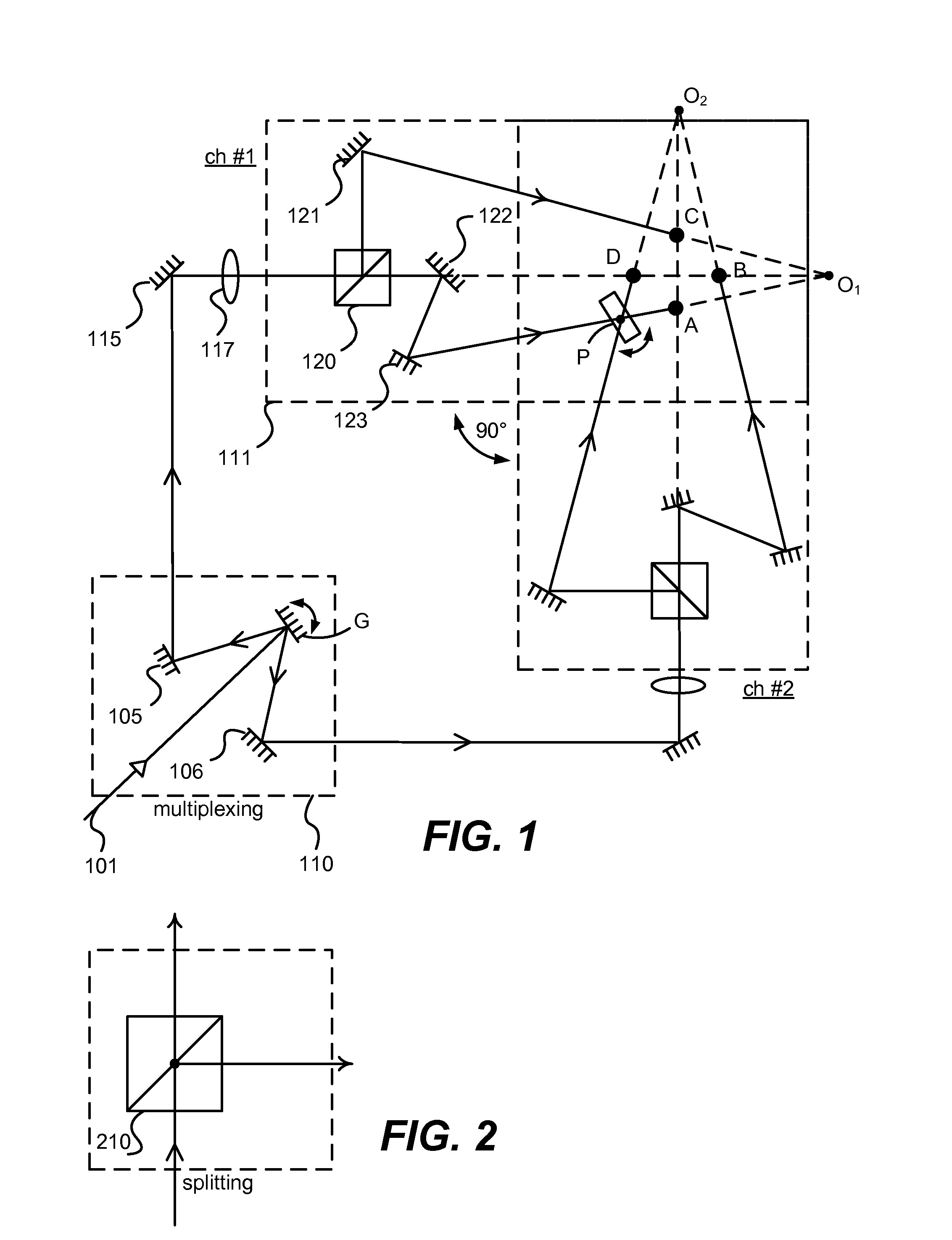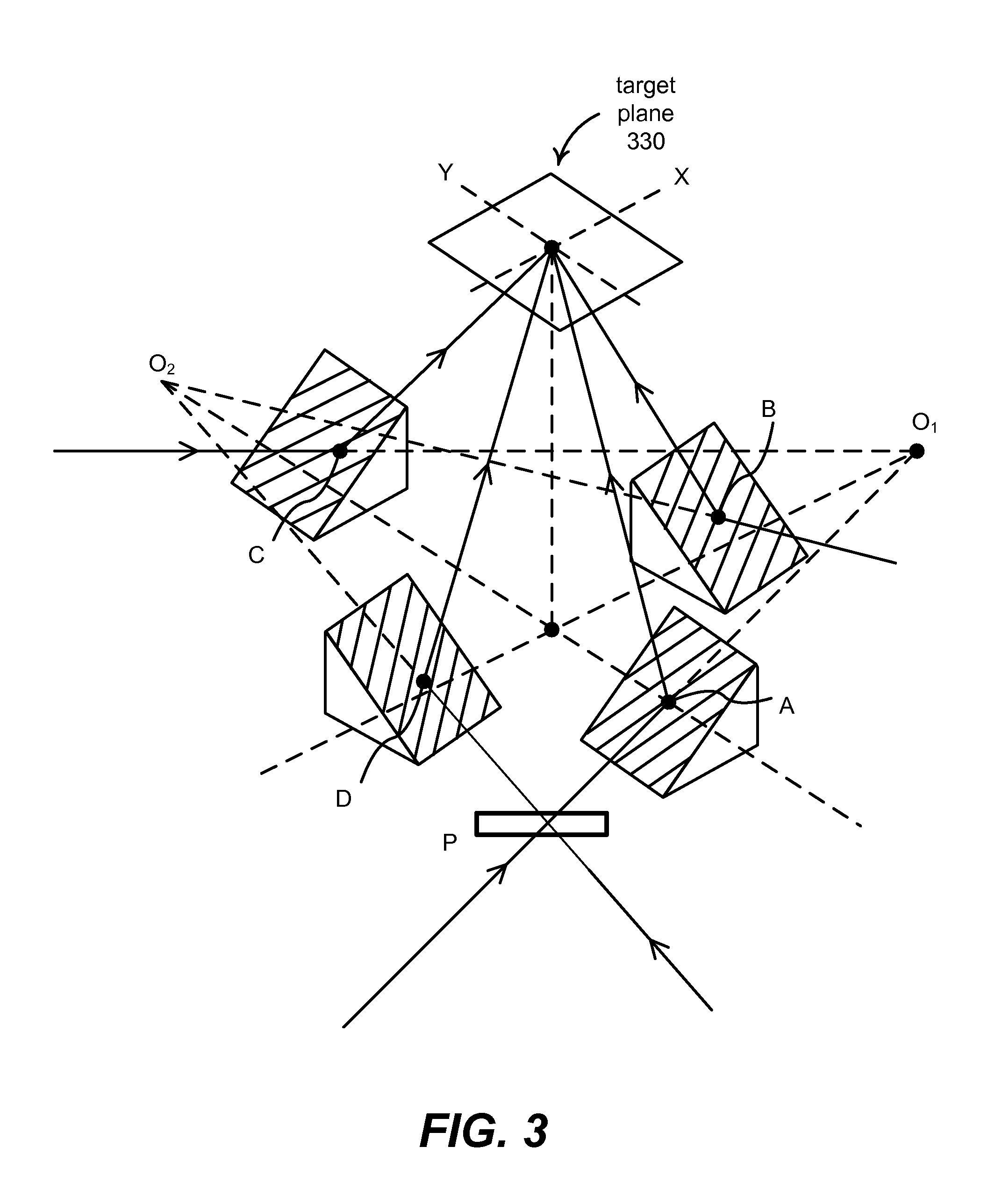Modular pattern illumination and light beam multiplexing for selective excitation of microparticles
a microparticle and module pattern technology, applied in the field of optical microscopy imaging, can solve the problems of significant reduction of illumination efficiency, challenge the alignment of pattern channels, and complicate the system design, and achieve the effect of simplifying the layout of optical components
- Summary
- Abstract
- Description
- Claims
- Application Information
AI Technical Summary
Benefits of technology
Problems solved by technology
Method used
Image
Examples
Embodiment Construction
[0022]The present invention makes use of a modular configuration to implement a pattern illumination system of any desirable number of channels. FIG. 1 illustrates the configuration of the basic dual-channel pattern module in which two single-channel pattern modules within a common plane are oriented, for example, at 90 degrees from each other, but other non-zero offset angles between the pattern modules can be used in other examples. Similarly, in other examples, the pattern modules may not be in a common plane. In the example shown in FIG. 1, a galvo-scanner-based phase-shifting module P is shared between these two channels. By eliminating the need for a phase-shifting module for each channel separately, fewer optical components are used, resulting in a manufacturing cost savings. Also, in one implementation of the invention, no anamorphic beam expander is used, in contrast to implementations used before this invention.
[0023]As illustrated in FIG. 1, an optical beam 101 enters the...
PUM
| Property | Measurement | Unit |
|---|---|---|
| offset angles | aaaaa | aaaaa |
| incident angle | aaaaa | aaaaa |
| offset angles | aaaaa | aaaaa |
Abstract
Description
Claims
Application Information
 Login to View More
Login to View More - R&D
- Intellectual Property
- Life Sciences
- Materials
- Tech Scout
- Unparalleled Data Quality
- Higher Quality Content
- 60% Fewer Hallucinations
Browse by: Latest US Patents, China's latest patents, Technical Efficacy Thesaurus, Application Domain, Technology Topic, Popular Technical Reports.
© 2025 PatSnap. All rights reserved.Legal|Privacy policy|Modern Slavery Act Transparency Statement|Sitemap|About US| Contact US: help@patsnap.com



